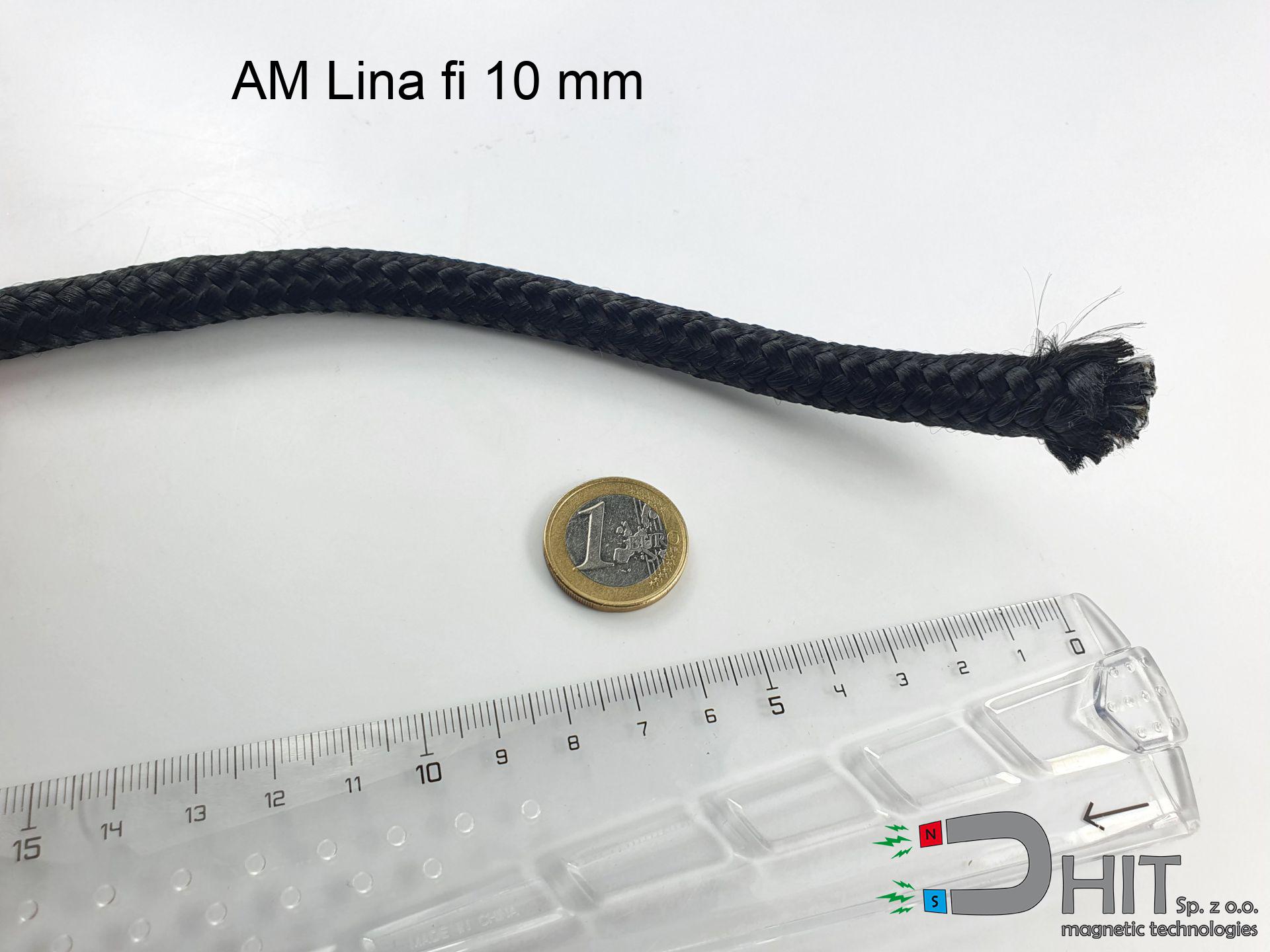MW 19x4 / N38 - cylindrical magnet
cylindrical magnet
Catalog no 010038
GTIN/EAN: 5906301810377
Diameter Ø
19 mm [±0,1 mm]
Height
4 mm [±0,1 mm]
Weight
8.51 g
Magnetization Direction
↑ axial
Load capacity
4.96 kg / 48.62 N
Magnetic Induction
240.51 mT / 2405 Gs
Coating
[Zn] Zinc
4.80 ZŁ with VAT / pcs + price for transport
3.90 ZŁ net + 23% VAT / pcs
bulk discounts:
Need more?
Call us
+48 888 99 98 98
if you prefer contact us through
contact form
our website.
Parameters along with structure of magnets can be checked on our
force calculator.
Order by 14:00 and we’ll ship today!
Technical specification of the product - MW 19x4 / N38 - cylindrical magnet
Specification / characteristics - MW 19x4 / N38 - cylindrical magnet
| properties | values |
|---|---|
| Cat. no. | 010038 |
| GTIN/EAN | 5906301810377 |
| Production/Distribution | Dhit sp. z o.o. |
| Country of origin | Poland / China / Germany |
| Customs code | 85059029 |
| Diameter Ø | 19 mm [±0,1 mm] |
| Height | 4 mm [±0,1 mm] |
| Weight | 8.51 g |
| Magnetization Direction | ↑ axial |
| Load capacity ~ ? | 4.96 kg / 48.62 N |
| Magnetic Induction ~ ? | 240.51 mT / 2405 Gs |
| Coating | [Zn] Zinc |
| Manufacturing Tolerance | ±0.1 mm |
Magnetic properties of material N38
| properties | values | units |
|---|---|---|
| remenance Br [min. - max.] ? | 12.2-12.6 | kGs |
| remenance Br [min. - max.] ? | 1220-1260 | mT |
| coercivity bHc ? | 10.8-11.5 | kOe |
| coercivity bHc ? | 860-915 | kA/m |
| actual internal force iHc | ≥ 12 | kOe |
| actual internal force iHc | ≥ 955 | kA/m |
| energy density [min. - max.] ? | 36-38 | BH max MGOe |
| energy density [min. - max.] ? | 287-303 | BH max KJ/m |
| max. temperature ? | ≤ 80 | °C |
Physical properties of sintered neodymium magnets Nd2Fe14B at 20°C
| properties | values | units |
|---|---|---|
| Vickers hardness | ≥550 | Hv |
| Density | ≥7.4 | g/cm3 |
| Curie Temperature TC | 312 - 380 | °C |
| Curie Temperature TF | 593 - 716 | °F |
| Specific resistance | 150 | μΩ⋅cm |
| Bending strength | 250 | MPa |
| Compressive strength | 1000~1100 | MPa |
| Thermal expansion parallel (∥) to orientation (M) | (3-4) x 10-6 | °C-1 |
| Thermal expansion perpendicular (⊥) to orientation (M) | -(1-3) x 10-6 | °C-1 |
| Young's modulus | 1.7 x 104 | kg/mm² |
Physical simulation of the product - report
Presented values represent the direct effect of a engineering analysis. Results were calculated on models for the material Nd2Fe14B. Operational conditions might slightly deviate from the simulation results. Please consider these calculations as a reference point when designing systems.
Table 1: Static pull force (force vs distance) - power drop
MW 19x4 / N38
| Distance (mm) | Induction (Gauss) / mT | Pull Force (kg/lbs/g/N) | Risk Status |
|---|---|---|---|
| 0 mm |
2405 Gs
240.5 mT
|
4.96 kg / 10.93 LBS
4960.0 g / 48.7 N
|
strong |
| 1 mm |
2239 Gs
223.9 mT
|
4.30 kg / 9.48 LBS
4299.0 g / 42.2 N
|
strong |
| 2 mm |
2033 Gs
203.3 mT
|
3.55 kg / 7.82 LBS
3547.4 g / 34.8 N
|
strong |
| 3 mm |
1811 Gs
181.1 mT
|
2.81 kg / 6.20 LBS
2813.0 g / 27.6 N
|
strong |
| 5 mm |
1376 Gs
137.6 mT
|
1.63 kg / 3.58 LBS
1625.2 g / 15.9 N
|
low risk |
| 10 mm |
635 Gs
63.5 mT
|
0.35 kg / 0.76 LBS
346.3 g / 3.4 N
|
low risk |
| 15 mm |
308 Gs
30.8 mT
|
0.08 kg / 0.18 LBS
81.2 g / 0.8 N
|
low risk |
| 20 mm |
164 Gs
16.4 mT
|
0.02 kg / 0.05 LBS
23.2 g / 0.2 N
|
low risk |
| 30 mm |
61 Gs
6.1 mT
|
0.00 kg / 0.01 LBS
3.1 g / 0.0 N
|
low risk |
| 50 mm |
15 Gs
1.5 mT
|
0.00 kg / 0.00 LBS
0.2 g / 0.0 N
|
low risk |
Table 2: Shear force (wall)
MW 19x4 / N38
| Distance (mm) | Friction coefficient | Pull Force (kg/lbs/g/N) |
|---|---|---|
| 0 mm | Stal (~0.2) |
0.99 kg / 2.19 LBS
992.0 g / 9.7 N
|
| 1 mm | Stal (~0.2) |
0.86 kg / 1.90 LBS
860.0 g / 8.4 N
|
| 2 mm | Stal (~0.2) |
0.71 kg / 1.57 LBS
710.0 g / 7.0 N
|
| 3 mm | Stal (~0.2) |
0.56 kg / 1.24 LBS
562.0 g / 5.5 N
|
| 5 mm | Stal (~0.2) |
0.33 kg / 0.72 LBS
326.0 g / 3.2 N
|
| 10 mm | Stal (~0.2) |
0.07 kg / 0.15 LBS
70.0 g / 0.7 N
|
| 15 mm | Stal (~0.2) |
0.02 kg / 0.04 LBS
16.0 g / 0.2 N
|
| 20 mm | Stal (~0.2) |
0.00 kg / 0.01 LBS
4.0 g / 0.0 N
|
| 30 mm | Stal (~0.2) |
0.00 kg / 0.00 LBS
0.0 g / 0.0 N
|
| 50 mm | Stal (~0.2) |
0.00 kg / 0.00 LBS
0.0 g / 0.0 N
|
Table 3: Wall mounting (sliding) - behavior on slippery surfaces
MW 19x4 / N38
| Surface type | Friction coefficient / % Mocy | Max load (kg/lbs/g/N) |
|---|---|---|
| Raw steel |
µ = 0.3
30% Nominalnej Siły
|
1.49 kg / 3.28 LBS
1488.0 g / 14.6 N
|
| Painted steel (standard) |
µ = 0.2
20% Nominalnej Siły
|
0.99 kg / 2.19 LBS
992.0 g / 9.7 N
|
| Oily/slippery steel |
µ = 0.1
10% Nominalnej Siły
|
0.50 kg / 1.09 LBS
496.0 g / 4.9 N
|
| Magnet with anti-slip rubber |
µ = 0.5
50% Nominalnej Siły
|
2.48 kg / 5.47 LBS
2480.0 g / 24.3 N
|
Table 4: Steel thickness (substrate influence) - sheet metal selection
MW 19x4 / N38
| Steel thickness (mm) | % power | Real pull force (kg/lbs/g/N) |
|---|---|---|
| 0.5 mm |
|
0.50 kg / 1.09 LBS
496.0 g / 4.9 N
|
| 1 mm |
|
1.24 kg / 2.73 LBS
1240.0 g / 12.2 N
|
| 2 mm |
|
2.48 kg / 5.47 LBS
2480.0 g / 24.3 N
|
| 3 mm |
|
3.72 kg / 8.20 LBS
3720.0 g / 36.5 N
|
| 5 mm |
|
4.96 kg / 10.93 LBS
4960.0 g / 48.7 N
|
| 10 mm |
|
4.96 kg / 10.93 LBS
4960.0 g / 48.7 N
|
| 11 mm |
|
4.96 kg / 10.93 LBS
4960.0 g / 48.7 N
|
| 12 mm |
|
4.96 kg / 10.93 LBS
4960.0 g / 48.7 N
|
Table 5: Working in heat (stability) - resistance threshold
MW 19x4 / N38
| Ambient temp. (°C) | Power loss | Remaining pull (kg/lbs/g/N) | Status |
|---|---|---|---|
| 20 °C | 0.0% |
4.96 kg / 10.93 LBS
4960.0 g / 48.7 N
|
OK |
| 40 °C | -2.2% |
4.85 kg / 10.69 LBS
4850.9 g / 47.6 N
|
OK |
| 60 °C | -4.4% |
4.74 kg / 10.45 LBS
4741.8 g / 46.5 N
|
|
| 80 °C | -6.6% |
4.63 kg / 10.21 LBS
4632.6 g / 45.4 N
|
|
| 100 °C | -28.8% |
3.53 kg / 7.79 LBS
3531.5 g / 34.6 N
|
Table 6: Magnet-Magnet interaction (repulsion) - forces in the system
MW 19x4 / N38
| Gap (mm) | Attraction (kg/lbs) (N-S) | Shear Force (kg/lbs/g/N) | Repulsion (kg/lbs) (N-N) |
|---|---|---|---|
| 0 mm |
10.11 kg / 22.28 LBS
3 990 Gs
|
1.52 kg / 3.34 LBS
1516 g / 14.9 N
|
N/A |
| 1 mm |
9.48 kg / 20.89 LBS
4 657 Gs
|
1.42 kg / 3.13 LBS
1421 g / 13.9 N
|
8.53 kg / 18.80 LBS
~0 Gs
|
| 2 mm |
8.76 kg / 19.31 LBS
4 477 Gs
|
1.31 kg / 2.90 LBS
1314 g / 12.9 N
|
7.88 kg / 17.38 LBS
~0 Gs
|
| 3 mm |
8.00 kg / 17.64 LBS
4 279 Gs
|
1.20 kg / 2.65 LBS
1200 g / 11.8 N
|
7.20 kg / 15.88 LBS
~0 Gs
|
| 5 mm |
6.47 kg / 14.25 LBS
3 846 Gs
|
0.97 kg / 2.14 LBS
970 g / 9.5 N
|
5.82 kg / 12.83 LBS
~0 Gs
|
| 10 mm |
3.31 kg / 7.30 LBS
2 753 Gs
|
0.50 kg / 1.10 LBS
497 g / 4.9 N
|
2.98 kg / 6.57 LBS
~0 Gs
|
| 20 mm |
0.71 kg / 1.56 LBS
1 271 Gs
|
0.11 kg / 0.23 LBS
106 g / 1.0 N
|
0.64 kg / 1.40 LBS
~0 Gs
|
| 50 mm |
0.02 kg / 0.04 LBS
193 Gs
|
0.00 kg / 0.01 LBS
2 g / 0.0 N
|
0.01 kg / 0.03 LBS
~0 Gs
|
| 60 mm |
0.01 kg / 0.01 LBS
121 Gs
|
0.00 kg / 0.00 LBS
1 g / 0.0 N
|
0.00 kg / 0.00 LBS
~0 Gs
|
| 70 mm |
0.00 kg / 0.01 LBS
81 Gs
|
0.00 kg / 0.00 LBS
0 g / 0.0 N
|
0.00 kg / 0.00 LBS
~0 Gs
|
| 80 mm |
0.00 kg / 0.00 LBS
56 Gs
|
0.00 kg / 0.00 LBS
0 g / 0.0 N
|
0.00 kg / 0.00 LBS
~0 Gs
|
| 90 mm |
0.00 kg / 0.00 LBS
41 Gs
|
0.00 kg / 0.00 LBS
0 g / 0.0 N
|
0.00 kg / 0.00 LBS
~0 Gs
|
| 100 mm |
0.00 kg / 0.00 LBS
30 Gs
|
0.00 kg / 0.00 LBS
0 g / 0.0 N
|
0.00 kg / 0.00 LBS
~0 Gs
|
Table 7: Hazards (electronics) - precautionary measures
MW 19x4 / N38
| Object / Device | Limit (Gauss) / mT | Safe distance |
|---|---|---|
| Pacemaker | 5 Gs (0.5 mT) | 7.5 cm |
| Hearing aid | 10 Gs (1.0 mT) | 6.0 cm |
| Timepiece | 20 Gs (2.0 mT) | 5.0 cm |
| Phone / Smartphone | 40 Gs (4.0 mT) | 4.0 cm |
| Car key | 50 Gs (5.0 mT) | 3.5 cm |
| Payment card | 400 Gs (40.0 mT) | 1.5 cm |
| HDD hard drive | 600 Gs (60.0 mT) | 1.5 cm |
Table 8: Impact energy (cracking risk) - warning
MW 19x4 / N38
| Start from (mm) | Speed (km/h) | Energy (J) | Predicted outcome |
|---|---|---|---|
| 10 mm |
25.39 km/h
(7.05 m/s)
|
0.21 J | |
| 30 mm |
42.19 km/h
(11.72 m/s)
|
0.58 J | |
| 50 mm |
54.44 km/h
(15.12 m/s)
|
0.97 J | |
| 100 mm |
76.99 km/h
(21.39 m/s)
|
1.95 J |
Table 9: Corrosion resistance
MW 19x4 / N38
| Technical parameter | Value / Description |
|---|---|
| Coating type | [Zn] Zinc |
| Layer structure | Zn (Zinc) |
| Layer thickness | 8-15 µm |
| Salt spray test (SST) ? | 48 h |
| Recommended environment | Indoors / Garage |
Table 10: Electrical data (Pc)
MW 19x4 / N38
| Parameter | Value | SI Unit / Description |
|---|---|---|
| Magnetic Flux | 7 831 Mx | 78.3 µWb |
| Pc Coefficient | 0.30 | Low (Flat) |
Table 11: Underwater work (magnet fishing)
MW 19x4 / N38
| Environment | Effective steel pull | Effect |
|---|---|---|
| Air (land) | 4.96 kg | Standard |
| Water (riverbed) |
5.68 kg
(+0.72 kg buoyancy gain)
|
+14.5% |
1. Sliding resistance
*Caution: On a vertical wall, the magnet retains only a fraction of its max power.
2. Efficiency vs thickness
*Thin steel (e.g. 0.5mm PC case) drastically reduces the holding force.
3. Power loss vs temp
*For standard magnets, the max working temp is 80°C.
4. Demagnetization curve and operating point (B-H)
chart generated for the permeance coefficient Pc (Permeance Coefficient) = 0.30
The chart above illustrates the magnetic characteristics of the material within the second quadrant of the hysteresis loop. The solid red line represents the demagnetization curve (material potential), while the dashed blue line is the load line based on the magnet's geometry. The Pc (Permeance Coefficient), also known as the load line slope, is a dimensionless value that describes the relationship between the magnet's shape and its magnetic stability. The intersection of these two lines (the black dot) is the operating point — it determines the actual magnetic flux density generated by the magnet in this specific configuration. A higher Pc value means the magnet is more 'slender' (tall relative to its area), resulting in a higher operating point and better resistance to irreversible demagnetization caused by external fields or temperature. A value of 0.42 is relatively low (typical for flat magnets), meaning the operating point is closer to the 'knee' of the curve — caution is advised when operating at temperatures near the maximum limit to avoid strength loss.
Elemental analysis
| iron (Fe) | 64% – 68% |
| neodymium (Nd) | 29% – 32% |
| boron (B) | 1.1% – 1.2% |
| dysprosium (Dy) | 0.5% – 2.0% |
| coating (Ni-Cu-Ni) | < 0.05% |
Ecology and recycling (GPSR)
| recyclability (EoL) | 100% |
| recycled raw materials | ~10% (pre-cons) |
| carbon footprint | low / zredukowany |
| waste code (EWC) | 16 02 16 |
Other products
Strengths and weaknesses of neodymium magnets.
Benefits
- They do not lose power, even over approximately ten years – the decrease in power is only ~1% (based on measurements),
- They feature excellent resistance to magnetism drop due to external fields,
- A magnet with a smooth silver surface is more attractive,
- The surface of neodymium magnets generates a strong magnetic field – this is one of their assets,
- Thanks to resistance to high temperature, they are capable of working (depending on the form) even at temperatures up to 230°C and higher...
- Considering the ability of accurate forming and adaptation to unique projects, NdFeB magnets can be modeled in a broad palette of shapes and sizes, which expands the range of possible applications,
- Wide application in electronics industry – they find application in hard drives, motor assemblies, advanced medical instruments, and complex engineering applications.
- Thanks to efficiency per cm³, small magnets offer high operating force, with minimal size,
Disadvantages
- At strong impacts they can break, therefore we advise placing them in steel cases. A metal housing provides additional protection against damage, as well as increases the magnet's durability.
- NdFeB magnets lose force when exposed to high temperatures. After reaching 80°C, many of them experience permanent weakening of strength (a factor is the shape as well as dimensions of the magnet). We offer magnets specially adapted to work at temperatures up to 230°C marked [AH], which are very resistant to heat
- Magnets exposed to a humid environment can corrode. Therefore while using outdoors, we advise using waterproof magnets made of rubber, plastic or other material protecting against moisture
- Due to limitations in producing nuts and complex forms in magnets, we recommend using a housing - magnetic holder.
- Possible danger resulting from small fragments of magnets are risky, when accidentally swallowed, which is particularly important in the context of child safety. Furthermore, small elements of these magnets can complicate diagnosis medical when they are in the body.
- Due to expensive raw materials, their price exceeds standard values,
Pull force analysis
Magnetic strength at its maximum – what affects it?
- using a plate made of low-carbon steel, functioning as a circuit closing element
- whose thickness reaches at least 10 mm
- with a surface free of scratches
- with direct contact (without impurities)
- for force acting at a right angle (pull-off, not shear)
- at conditions approx. 20°C
Practical lifting capacity: influencing factors
- Clearance – the presence of foreign body (paint, dirt, gap) acts as an insulator, which lowers capacity rapidly (even by 50% at 0.5 mm).
- Angle of force application – maximum parameter is obtained only during perpendicular pulling. The resistance to sliding of the magnet along the surface is typically several times smaller (approx. 1/5 of the lifting capacity).
- Substrate thickness – to utilize 100% power, the steel must be adequately massive. Thin sheet restricts the lifting capacity (the magnet "punches through" it).
- Metal type – different alloys attracts identically. Alloy additives worsen the attraction effect.
- Surface finish – ideal contact is possible only on polished steel. Any scratches and bumps reduce the real contact area, reducing force.
- Thermal factor – high temperature weakens pulling force. Exceeding the limit temperature can permanently demagnetize the magnet.
Lifting capacity testing was performed on a smooth plate of optimal thickness, under perpendicular forces, however under parallel forces the holding force is lower. In addition, even a small distance between the magnet and the plate lowers the lifting capacity.
Safe handling of neodymium magnets
Pinching danger
Watch your fingers. Two large magnets will join instantly with a force of massive weight, destroying anything in their path. Exercise extreme caution!
Do not underestimate power
Before starting, check safety instructions. Uncontrolled attraction can destroy the magnet or injure your hand. Think ahead.
Magnets are brittle
Neodymium magnets are sintered ceramics, meaning they are very brittle. Collision of two magnets leads to them shattering into small pieces.
Warning for heart patients
Health Alert: Strong magnets can deactivate pacemakers and defibrillators. Stay away if you have medical devices.
Electronic hazard
Data protection: Strong magnets can ruin data carriers and delicate electronics (heart implants, hearing aids, timepieces).
Choking Hazard
Neodymium magnets are not intended for children. Accidental ingestion of multiple magnets can lead to them attracting across intestines, which constitutes a severe health hazard and requires urgent medical intervention.
Combustion hazard
Machining of NdFeB material poses a fire risk. Magnetic powder reacts violently with oxygen and is hard to extinguish.
Impact on smartphones
A strong magnetic field interferes with the operation of magnetometers in phones and GPS navigation. Do not bring magnets near a device to avoid damaging the sensors.
Nickel allergy
Some people experience a hypersensitivity to nickel, which is the typical protective layer for NdFeB magnets. Prolonged contact may cause dermatitis. We suggest wear safety gloves.
Thermal limits
Avoid heat. NdFeB magnets are sensitive to temperature. If you require operation above 80°C, ask us about special high-temperature series (H, SH, UH).


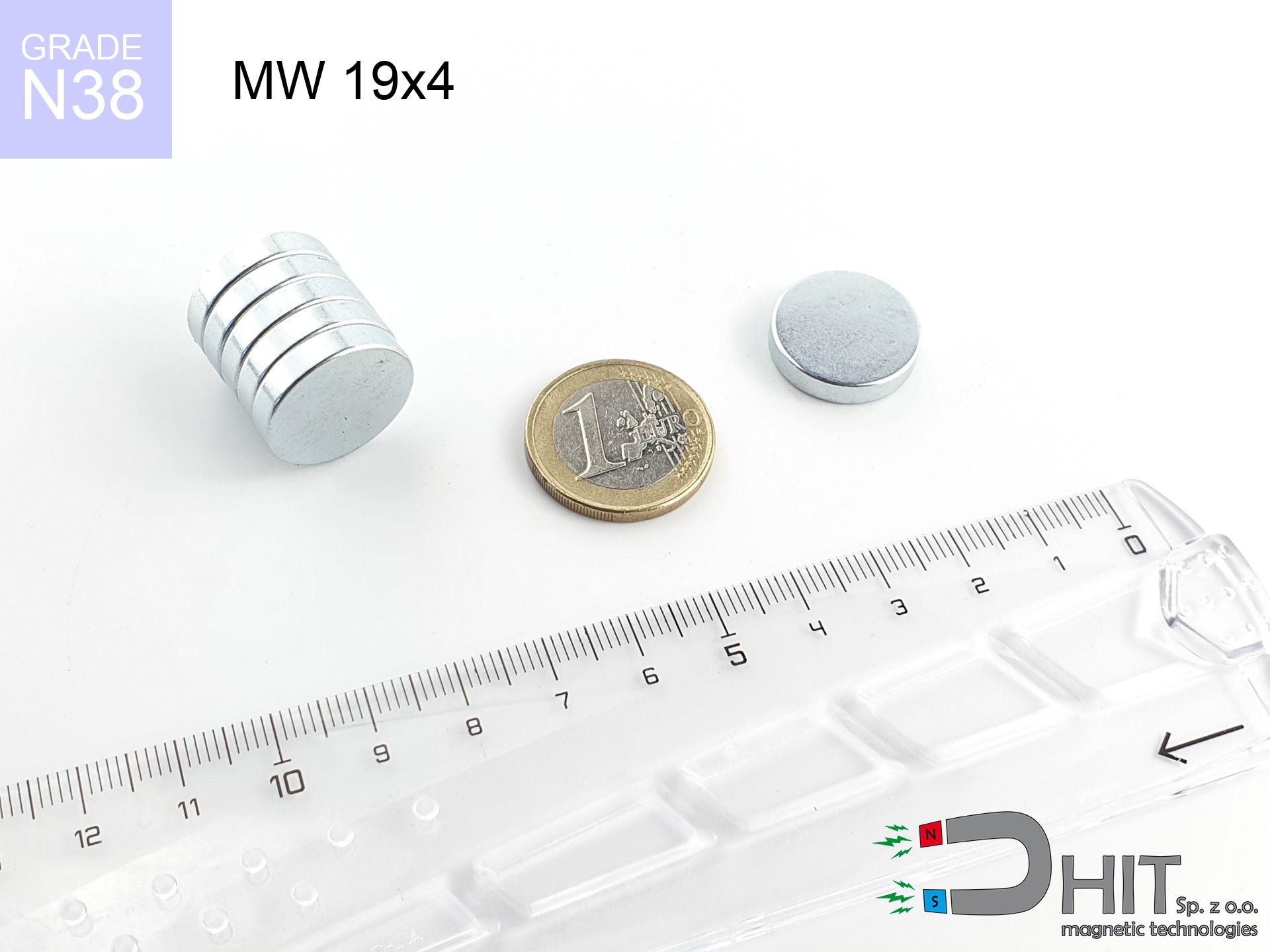
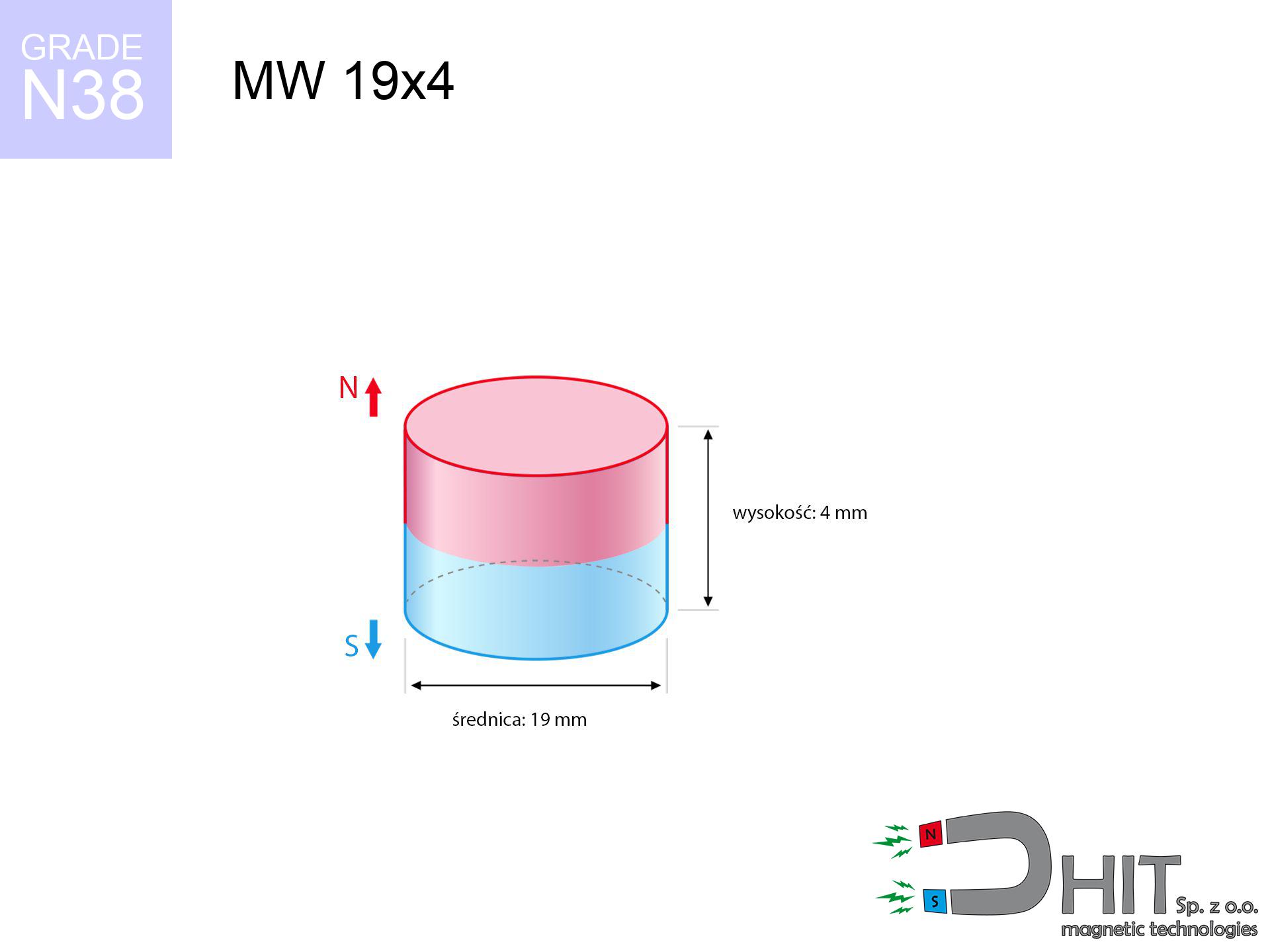
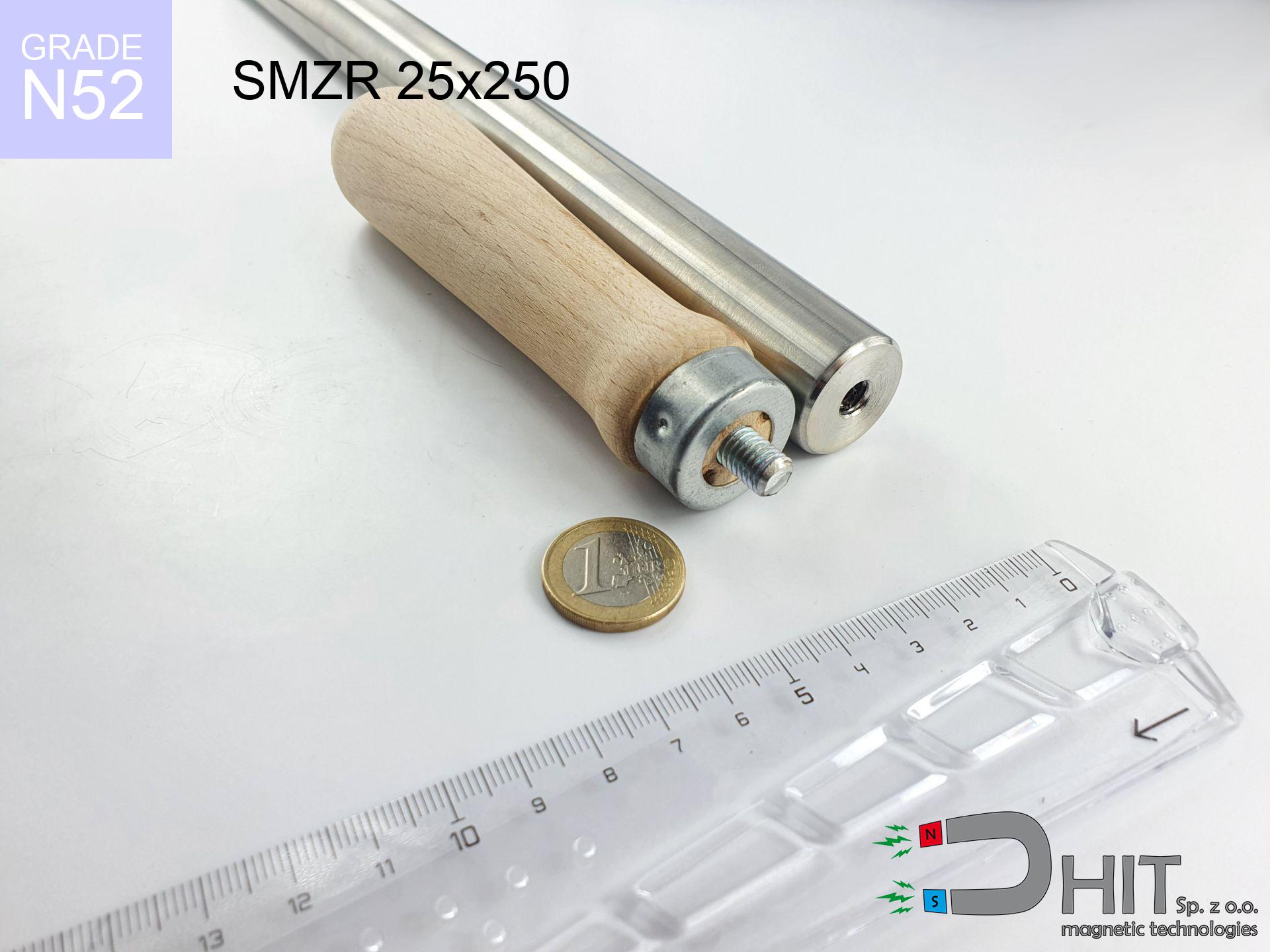
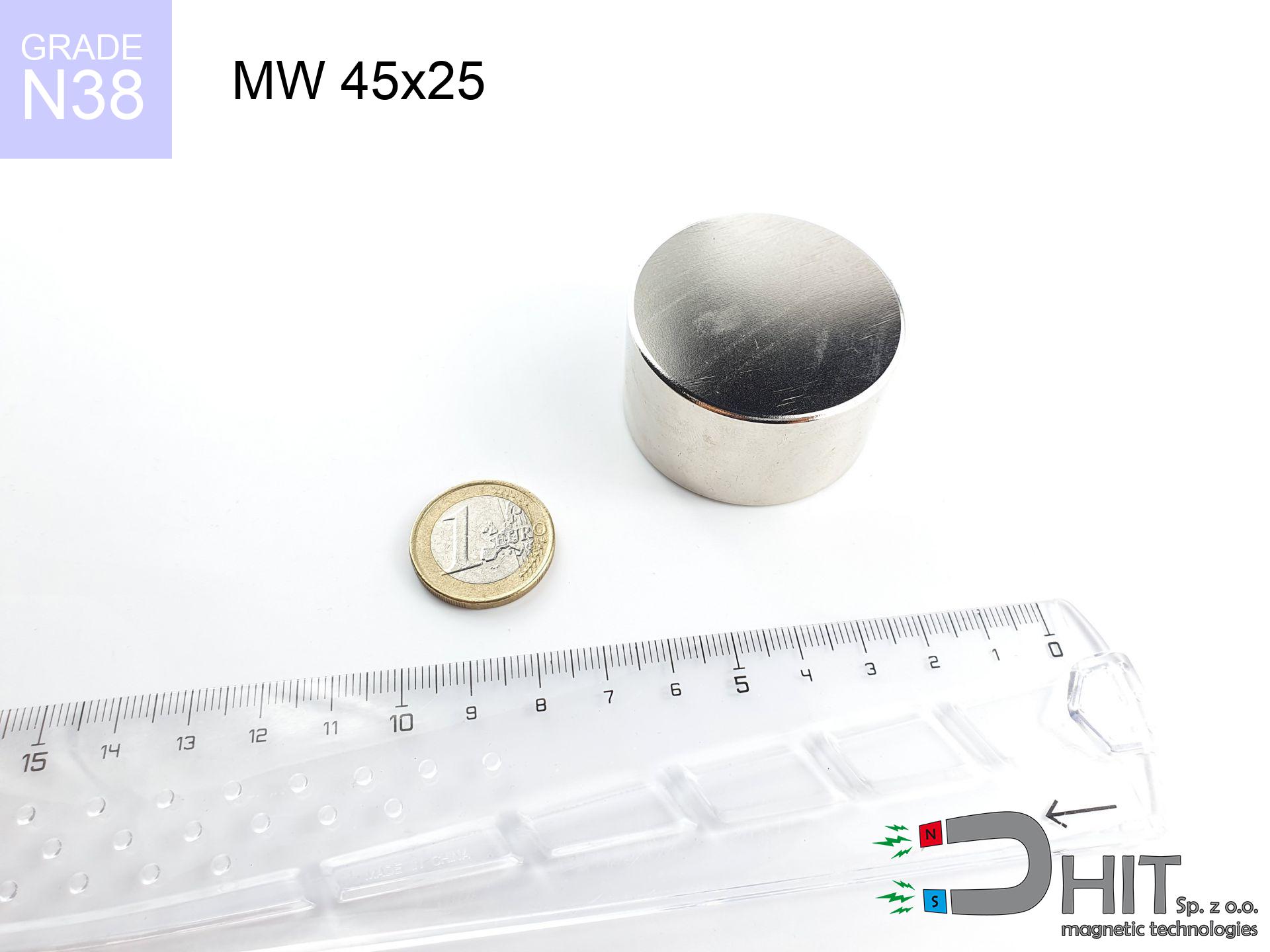
![UI 45x13x5 [M301] / N38 - badge holder UI 45x13x5 [M301] / N38 - badge holder](https://cdn3.dhit.pl/graphics/products/ui45x13x5-m301-vud.jpg)
